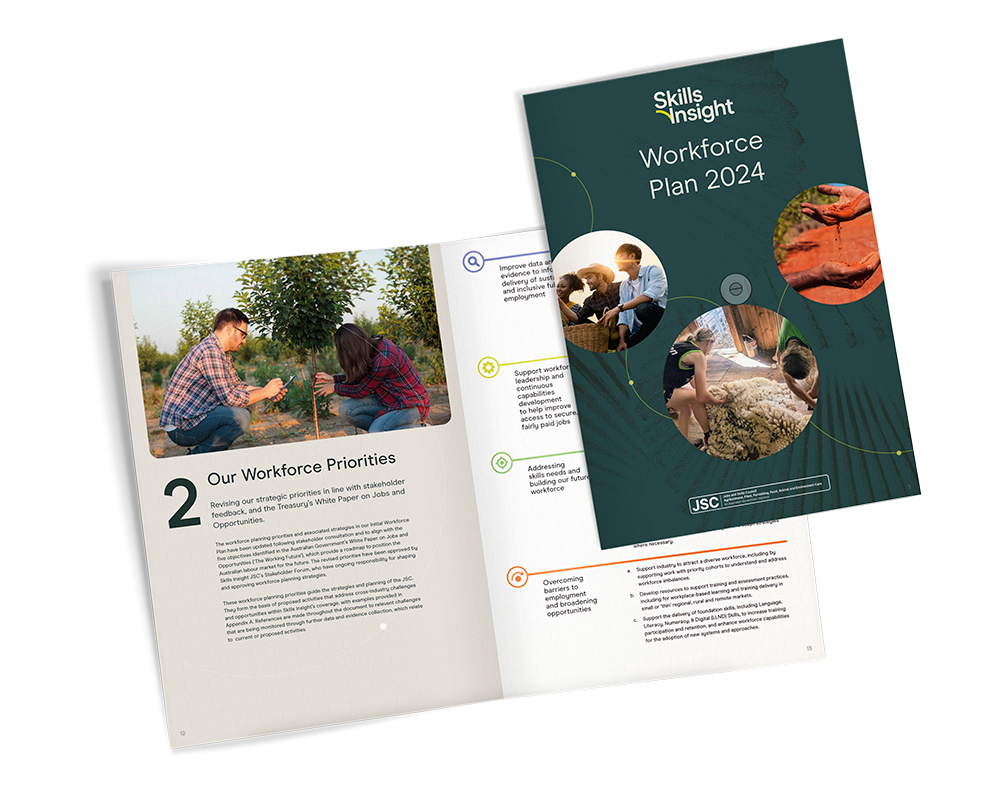This industry consists of businesses that process and manufacture natural (e.g. wool, cotton and leather) and synthetic (e.g. polyvinyl chloride: PVC) materials, for textiles, leather, clothing and footwear goods production. It also covers services associated with these goods, including fashion and textile design, dry cleaning operations, laundry operations and clothing and footwear repairs.
Key updates
Post-pandemic recovery in employment
The Internet Vacancy Index has shown that demand for all key occupations within the industry (Laundry Workers, Sewing Machinists, Clothing Trades Workers, Other Cleaners, Manufacturers) have recovered from 2020. However, the Labour Force Survey showed that whilst there is an increasing trend in the cumulative hours worked (e.g. Laundry workers), others are in a downtrend (e.g. Sewing Machinists) consistent with JSA’s projections in below economy-wide average demand.
Challenging operating conditions for Laundry Workers
A steep decline was observed in the number of Laundry Workers nationwide in the Labour Force Survey, from 15,700 in 2022 to 9,600 during 2023. According to Luke Simpkins, CEO of the Laundry Association Australia, businesses have been challenged by sharp increases in operation costs. Further, Catherine Cluning, CEO of the Drycleaning Institute of Australia, has noted that the erroneously low ANZSCO skill level (5) of occupations such as Drycleaner (within the Laundry Workers group) impacts skilled worker attraction because it omits those occupations from being eligible for the Skills Priority List, Apprenticeships Priority List, Skilled Migration Lists, and other relevant subsidies and programs.
Opportunities
New and emerging skills
Increases in the repair, reuse and recycling of textiles is predicted to have a significant impact on the industry, including emergent skills in eco-friendly production and design. There is also rising demand for skills in digital printing, laser cutting and textile mechanics
Consumer demand
Demand for locally made, ethical and sustainable products is providing opportunities for businesses to focus on quality craftsmanship and strong technical skills.
Challenges
International competition
Textile, Clothing and Footwear wholesalers and retailers often turn to lower cost imports for supply, which the government is supporting through reduced import tariffs from July 2024. This may reduce demand for local production.
Changing skills landscape
Local manufacturers who aim to reduce operating costs with new technology may lead to an increased demand for higher skilled workers, and a reduction in lower skilled workers.
Upskilling and reskilling
Employers have noted workforce benefits from offering apprenticeships to existing staff; however, apprenticeship wages must be supplemented to avoid worker disadvantage, and there may be productivity loss during staff withdrawal from work duties for training. Employers are seeking solutions that incentivise investing in existing staff.
Data monitoring priorities

36,782
workers
(2021 Census)
1.5%
First Nations
(2021 Census)
12,600
2028 Projection
(JSA Projections)

57%
Female
(2021 Census)

Workforce Plan 2024
The Workforce Plan describes workforce challenges and skill opportunities identified by stakeholders across the industries we work with and outlines strategies to address them.
The 2024 Workforce Plan outlines four key Workforce Planning Priorities to guide the strategies and planning of our JSC work, retaining the strategic intent of the Initial Workforce Plan, with modifications to align with the Australia Government’s White Paper on Jobs and Opportunities.